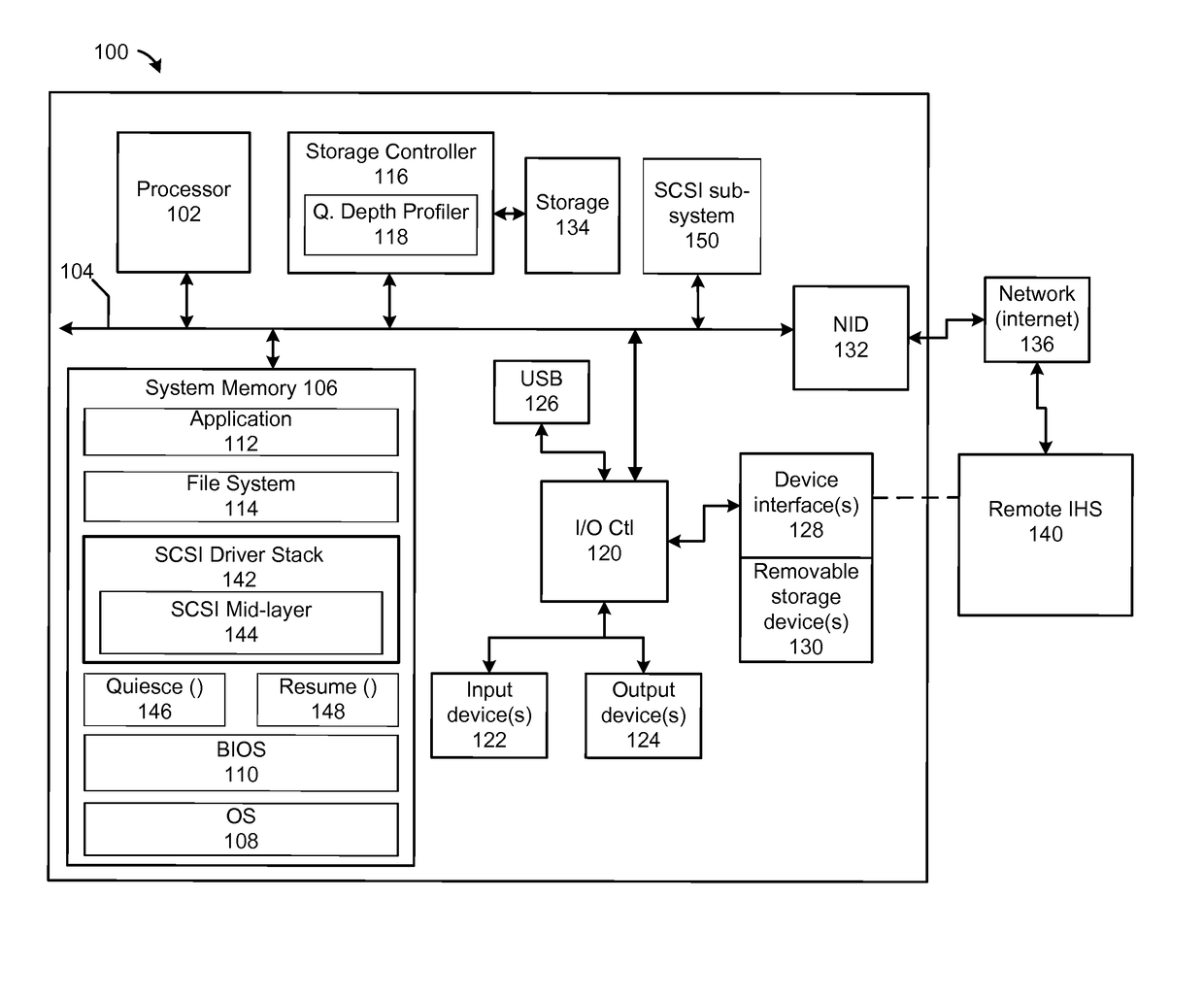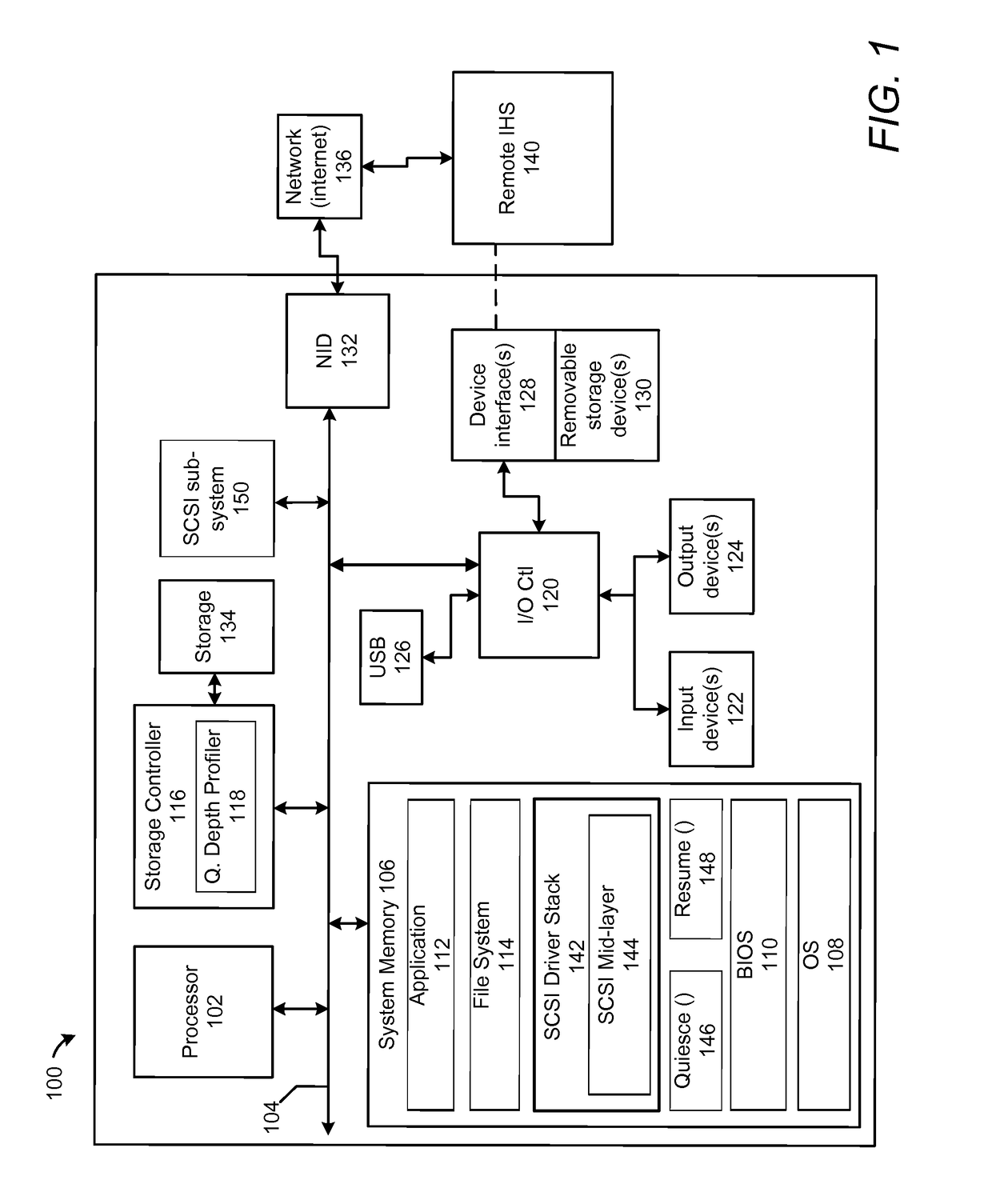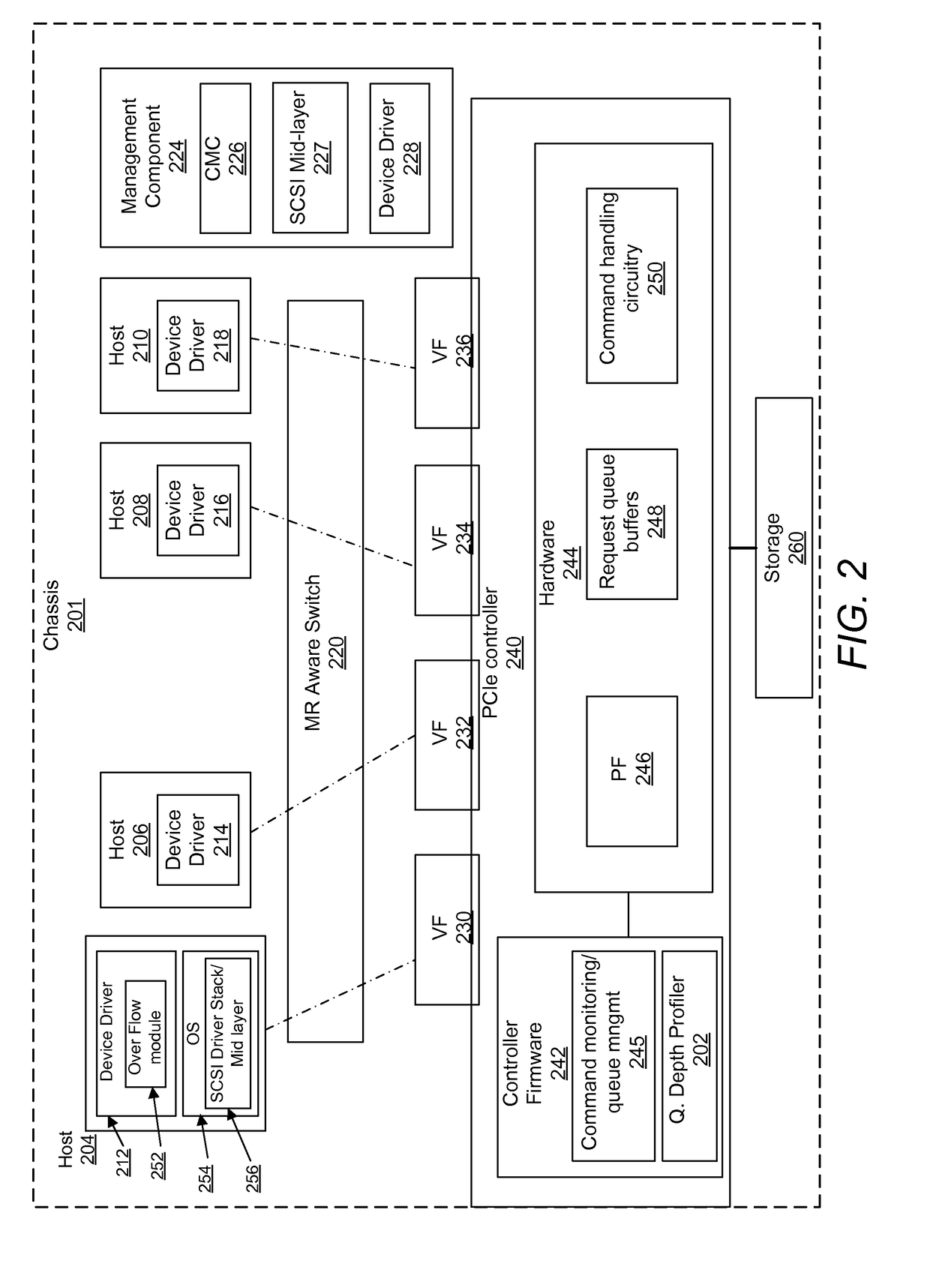Dynamic allocation of queue depths for virtual functions in a converged infrastructure
a virtual function and converged infrastructure technology, applied in the field of information handling systems, can solve the problems of undue delay in command execution of commands from other blades (and/or corresponding virtual functions), and the allocation of resources is not finely tuned
- Summary
- Abstract
- Description
- Claims
- Application Information
AI Technical Summary
Benefits of technology
Problems solved by technology
Method used
Image
Examples
Embodiment Construction
[0016]The illustrative embodiments provide a method and an information handling system (IHS) that dynamically modifies queue depth values based on changing relative workload demands of virtual functions. A controller, using a queue depth profiler, determines for each virtual function an average number of total unfulfilled, outstanding requests. The controller compares parameter values for an average number of total outstanding requests across the plurality of virtual functions. The controller determines a relative demand for request queue depth corresponding to each respective virtual function based on the compared parameter values. The controller calculates for each virtual function, based on the relative demand, desired queue depth values, each representing a maximum number of outstanding commands that can be allocated to a respective virtual function. The controller triggers, via an OS device driver, completion of pending requests for a first processing state. In response to succ...
PUM
 Login to View More
Login to View More Abstract
Description
Claims
Application Information
 Login to View More
Login to View More - R&D
- Intellectual Property
- Life Sciences
- Materials
- Tech Scout
- Unparalleled Data Quality
- Higher Quality Content
- 60% Fewer Hallucinations
Browse by: Latest US Patents, China's latest patents, Technical Efficacy Thesaurus, Application Domain, Technology Topic, Popular Technical Reports.
© 2025 PatSnap. All rights reserved.Legal|Privacy policy|Modern Slavery Act Transparency Statement|Sitemap|About US| Contact US: help@patsnap.com



